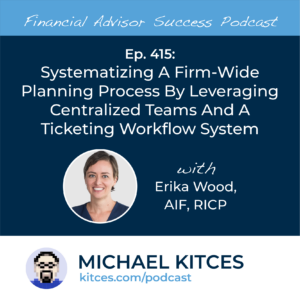When a financial planning firm is hiring a new employee, it naturally wants to find the best candidate to fill the role. However, some firms may unintentionally limit the applicant pool by using a promotion and selection process that doesn't focus on the most important traits or that introduces biases, which can lead to missing out on candidates who might otherwise have been well-suited for the position. But by taking a structured, inclusive approach to the hiring process, firms can attract a diverse talent pool and increase the likelihood of finding the right person for the job.
Inclusivity starts with a firm's website and marketing materials, which can influence the pool of applicants who apply for an open position. If all of the individuals featured on a firm's site look similar in age, ethnicity, and/or gender, potential applicants (and prospective clients!) who don't identify the same way might feel uncomfortable about joining the firm. Additionally, carefully choosing the requirements and qualifications to include in a job description can attract skilled individuals without excluding those who might not meet non-essential criteria (like having a bachelor's degree). Further, including salary details and growth potential in the job listing, as well as avoiding the use of industry jargon or gendered language, can further broaden the pool of people excited to apply.
When promoting an open position, firms can benefit from advertising beyond their personal networks and local geographic areas. Posting available positions on industry career centers and job boards (e.g., CFP Board Career Center, FPA Job Board), on general interest sites (e.g., Indeed.com, Monster Jobs, LinkedIn), and with groups that target specific populations (e.g., Association of African American Financial Advisors) can improve the chances that the listing will be seen by the widest possible group of potential candidates, thereby strengthening the applicant pool and increasing the chance of a great hire.
Another approach for helping the firm choose the right applicant is to implement a structured interview and selection process, which can mitigate the impact of unconscious bias and increase the odds that new hires will have the necessary skills. Such a process can include standardized work sample exercises to assess the candidate's competencies and an interview process that asks each candidate the same set of questions to ensure a uniform experience for each individual. A standard scoring rubric for work samples and interviews ensures that candidates will be scored on the traits being assessed (and not just by their ability to charm interviewers!).
Ultimately, the key point is that given the time and cost involved in hiring and training new employees, selecting the most qualified individual is a business imperative. Which means that taking the time to create a structured, inclusive hiring process that allows a firm to access the broadest possible pool of potential candidates and evaluate them effectively can be an investment that pays off for a firm for years to come!




